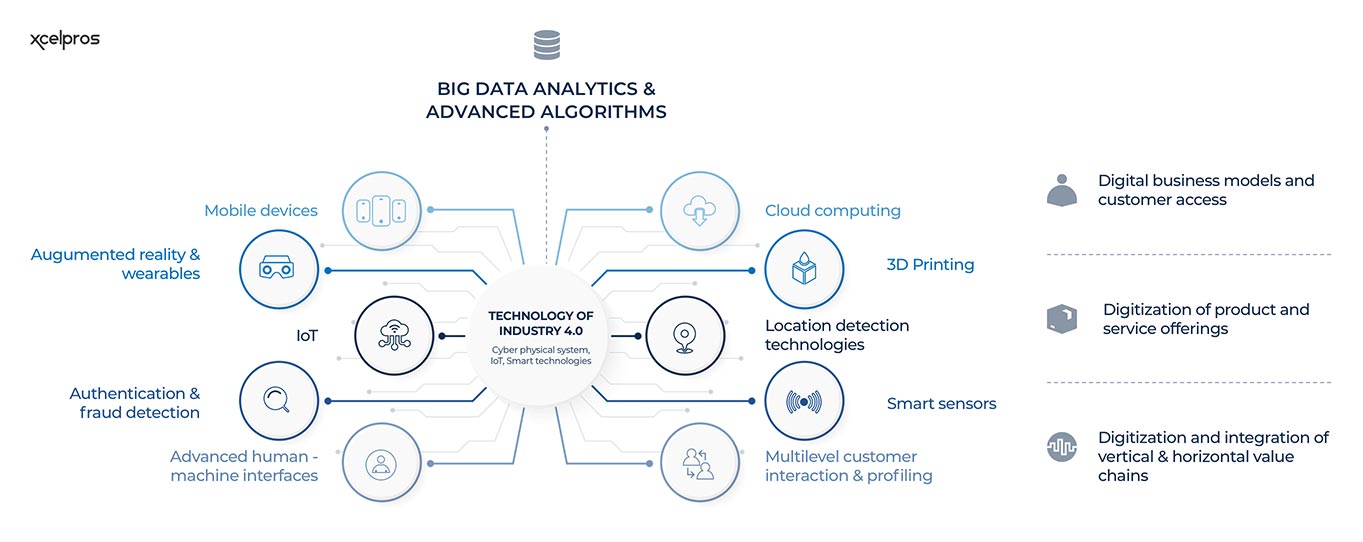Introduction
In today’s rapidly evolving manufacturing landscape, managing finances and operations efficiently is more important than ever. CFOs at the helm of manufacturing companies are continuously looking for solutions that offer both agility and scalability to meet the dynamic demands of the industry. Enter Dynamics 365 FO – an integrated, adaptable business management solution that streamlines and optimizes your financial and operational processes. This article looks at why it’s the preferred choice for leading manufacturers.
The Power of Dynamics 365 FO
The modern business ecosystem is characterized by its dynamic nature, with various departments functioning simultaneously and producing vast amounts of data. To navigate this environment successfully, having a holistic view becomes paramount. Dynamics 365 Finance and Operations (FO) was designed from the ground up to cater to this precise need, providing an all-inclusive outlook that merges distinct data streams into one cohesive narrative.
Simplifying Complex Data Streams:
One of the standout features of Dynamics 365 FO is its ability to consolidate intricate data from multiple departments. Be it the intricate details of financial transactions, the nuances of sales funnels, feedback from service departments, or metrics from daily operations, everything is presented in a user-friendly manner. This eliminates the traditional chaos of toggling between different systems or spreadsheets, bringing visibility to everything under one, easy to use dashboard.
Enabling Proactive Financial Leadership:
For CFOs, an integrated view is nothing short of revolutionary. Financial decisions, traditionally based on historical data or isolated current metrics, can now be made with a broader context in mind. Real-time insights mean that these decisions are timely, relevant, and more aligned with the company’s current state and future trajectory. This proactive approach aids in forecasting, risk assessment, and identifying growth opportunities.
Optimizing Operational Efficiencies:
Beyond finances, the comprehensive view offered by Dynamics 365 FO includes several operational benefits. Teams can spot inefficiencies, understand bottlenecks, and streamline processes by having a clear picture of the entire operation. This not only improves productivity but also ensures better resource allocation and process optimization.
Fostering Cross-Departmental Collaboration:
An overlooked advantage of this unified view is the enhanced collaboration it fosters. When data is siloed, departments often function in isolation. However, with Dynamics 365 FO’s comprehensive view, teams can see how their functions interplay with others, leading to better inter-departmental understanding and collaboration.
The Promise of Scalability and Flexibility with Dynamics 365 FO
In manufacturing, the pace and direction of growth can be unpredictable. Today’s startups can swiftly emerge as tomorrow’s industry leaders, while established giants continuously seek to innovate and expand. With such varied trajectories, it’s paramount for businesses to have technological solutions that work well together. Dynamics 365 Finance and Operations (FO) shines brightly in this domain, embodying the essence of scalability and flexibility.
Adapting to Varied Business Sizes:
One of the fundamental attributes of Dynamics 365 FO is its inherent design to cater to businesses of all sizes. For startups or burgeoning manufacturing units, the platform provides essential tools without being overwhelmed with complexity. As these enterprises grow, additional modules or functionalities can be integrated seamlessly, ensuring that the system remains as agile as the business it supports.
Customizable to Unique Requirements:
Every manufacturing business, regardless of its size, has unique operational requirements. Dynamics 365 FO recognizes this diversity and offers a high degree of customization out of the box. Whether it’s specific reporting tools, unique inventory management systems, or sales tracking metrics, Microsoft’s Tier 1 ERP platform can be tailored to fit these distinct needs. This ensures that businesses don’t have to modify their operations to fit the software; instead, the software molds itself to the business.
Integration without Interruption:
As businesses expand, there’s usually a growing need to integrate new tools, systems, or third-party applications. This is another area where Dynamics 365 FO stands out, offering a growing number of powerful integration capabilities. Whether you’re integrating with a new CRM system, e-commerce platforms, or advanced analytics tools, D365 lets you make these connections without disrupting the existing setup.
Future-Proofing Operations:
The pace of technological advancement is relentless. What’s tip-of-the-spear today could very well be obsolete tomorrow. D365’s commitment to scalability ensures that businesses are not just equipped for their current challenges, but also future proofed. Regular updates, new feature rollouts, and compatibility with emerging technologies mean that businesses using Dynamics 365 FO are always a step ahead.
Diving-into-the-Advanced-Analytics-of-Dynamics-365-FO
Figure 1:Advanced Analytics of Dynamics 365 F&O

The ability to extract meaningful insights from this vast resource is what differentiates industry leaders from the rest. Dynamics 365 Finance and Operations (FO) has integrated advanced analytics into its core, harnessing the capabilities of Artificial Intelligence (AI) and machine learning to transform raw data into actionable strategies.
Predictive Capabilities at Your Fingertips:
One of the stellar features of Dynamics 365 FO is its predictive analytics. With the integration of machine learning, the platform can analyze historical data and current trends to forecast future patterns. For businesses, this means being able to anticipate market shifts, customer preferences, or inventory needs, allowing them to stay ahead of the curve.
Deep Dive into Data:
Beyond surface-level metrics, Dynamics 365 FO’s advanced analytics provides a deep, granular view into business operations. Whether it’s understanding the nuances of sales cycles, pinpointing inefficiencies in the supply chain, or gauging the financial health of the company, the platform provides detailed insights that are both comprehensive and comprehensible.
Automated Insights for Quick Decisions:
In the fast-paced world of business, speed often equates to success. Dynamics 365 FO’s AI-driven analytics automatically highlights significant data points, anomalies, or potential areas of concern. This means that decision-makers don’t have to sift through heaps of data; they receive curated insights, enabling faster, data-driven decisions.
Empowering Financial Foresight:
For financial leaders and CFOs, these analytics are a treasure trove. The platform not only provides a real-time snapshot of the company’s financial position but also offers predictive financial modeling. This allows CFOs to strategize proactively, be it for capital allocation, risk management, or identifying potential growth avenues.
Seamless Integration with Other Data Sources:
One of the standout features of D365’s analytic capabilities is its ability to integrate data from other sources. Whether it’s external market data, social media sentiments, or third-party applications, the platform can incorporate these seamlessly, ensuring a holistic analytical view.
Elevating Your Bottom Line
With the optimized processes and real-time analytics that Dynamics 365 FO brings to the table, you can:
Reduce Operational Costs:
Identify inefficiencies in your production line, inventory management, and supply chain, allowing you to cut unnecessary costs.
Enhance Revenue Streams:
By offering insights into sales trends and customer preferences, Dynamics 365 FO enables the creation of targeted marketing and sales strategies that resonate with your audience.
Improve Cash Flow:
With an efficient system to manage receivables, payables, and inventory, ensure that your cash flow remains consistent and healthy.
Driving Efficiencies Across the Board
Manufacturing businesses often grapple with the challenge of integrating multiple disparate systems. Dynamics 365 FO offers a seamless integration capability, allowing companies to:
Boost Productivity:
Automate routine tasks, from invoicing to order processing, freeing up your team to focus on strategic initiatives.
Streamline Supply Chain:
Get real-time visibility into inventory, demand, and supply, enabling more accurate forecasting and efficient inventory management.
Enhance Collaboration:
Dynamics 365 FO promotes cross-departmental collaboration with shared data and processes, ensuring everyone is on the same page.
Conclusion
In the complex world of modern manufacturing, an increased number of businesses are looking for tools that elevate their performance and efficiency – this is where Dynamics 365 FO stands out as a shining solution that can be tailored to guide enterprises through today’s challenges with unmatched precision and adaptability. Its unparalleled integrative capabilities, innovative analytics, and bespoke flexibility transform not just the operations but the very essence of how businesses function.
By bridging gaps, enhancing revenue, and promoting seamless collaboration, Dynamics 365 FO ensures that businesses are not just adapting but excelling, able to chart new territories of success. As we navigate this changing landscape the question is not about survival, but about pioneering change. Take the leap and harness the transformative power of Dynamics 365 FO.




















